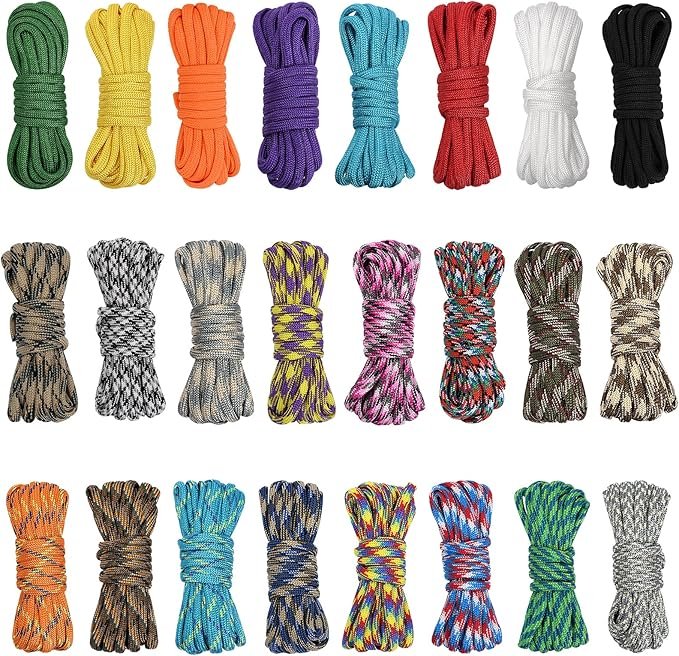
How do You Cut Thick Nylon Rope?
Nylon rope is one of the most useful tools you can have. It’s strong, durable, and can be used for so many things—like tying down a tent when you’re camping, securing a boat at the dock, or even lifting heavy objects during construction. But here’s the thing: nylon rope is tough. And when you need to cut a thick nylon rope, it’s not as easy as snipping a piece of string with scissors. If you don’t do it right, the rope can fray, making it messy and harder to use.
Cutting thick nylon rope might seem tricky, but don’t worry! With the right tools and a few simple steps, you can do it like a pro. Whether you’re a DIY enthusiast, a camper, or just someone who needs to fix something around the house, this guide will show you exactly how to cut thick nylon rope safely and cleanly. By the end of this blog, you’ll know everything you need to get the job done right—without any hassle. Let’s get started!
Tools You’ll Need
Cutting thick nylon rope might sound simple, but having the right tools makes all the difference. Think of it like this: you wouldn’t use a spoon to cut a steak, right? The same goes for nylon rope—you need the proper tools to get the job done cleanly and safely. Here’s a detailed breakdown of what you’ll need and why each tool is important:
1. Sharp Knife or Utility Knife
A sharp knife is one of the most common tools for cutting nylon rope. It’s easy to use and works well if you don’t have any special tools. Make sure the knife is really sharp—dull knives can crush the rope instead of cutting it, leaving you with frayed ends. A utility knife with a retractable blade is a great option because it’s safe to carry and easy to control.
2. Rope Cutter or Hot Knife
If you’re cutting nylon rope often, a rope cutter or hot knife is a game-changer. A rope cutter is a special tool designed to slice through thick ropes quickly and cleanly. A hot knife, on the other hand, uses heat to melt through the rope as it cuts. This not only gives you a clean cut but also seals the ends at the same time, preventing fraying. Hot knives are especially handy for thick ropes because they make the job so much easier.
3. Heavy-Duty Scissors
Not all scissors can handle thick nylon rope, but heavy-duty scissors can. These are bigger and stronger than regular scissors, and they’re designed to cut through tough materials. If you’re working with a rope that’s not too thick, heavy-duty scissors can do the trick. Just make sure they’re sharp and sturdy—otherwise, you might end up with a messy cut.
4. Lighter or Heat Source
If you’re using a regular knife or scissors, you’ll need a way to seal the ends of the rope after cutting. This is where a lighter or heat source comes in. By carefully melting the ends of the rope, you can stop them from fraying and make them last longer. Just be careful not to burn yourself or the rope too much—a quick pass over the flame is usually enough.
5. Measuring Tape or Marker
Before you start cutting, you need to know where to cut! A measuring tape helps you figure out the exact length you need, and a marker lets you make a clear line on the rope so you know where to cut. This step might seem small, but it’s super important if you want to avoid wasting rope or ending up with a piece that’s too short.
6. Clamps or a Vice
Thick nylon rope can be tricky to hold steady while you’re cutting it. That’s where clamps or a vice come in handy. These tools help you keep the rope in place so you can cut it safely and accurately. If you don’t have clamps or a vice, you can ask someone to hold the rope for you—just make sure they stay clear of the cutting area!

Step-by-Step Guide to Cutting Thick Nylon Rope
Now that you’ve got your tools ready, it’s time to dive into the fun part—cutting that thick nylon rope! Don’t worry if you’ve never done this before. I’ll walk you through each step, so you can do it like a pro. Just follow along, take your time, and remember: safety first!
Step 1: Measure and Mark
Before you even think about cutting, you need to know where to cut. Grab your measuring tape and figure out how long you need the rope to be. Let’s say you need a 10-foot piece—measure 10 feet from the end of the rope and make a small mark with your marker or chalk. This mark is your cutting point.
Pro Tip: Double-check your measurement! It’s way easier to measure twice than to fix a rope that’s too short.
Step 2: Secure the Rope
Thick nylon rope can be slippery and hard to hold steady, especially if it’s thick. To make sure you get a clean cut, you need to keep the rope from moving around. If you have clamps or a vice, use them to hold the rope firmly in place. If you don’t have these tools, you can ask a friend to hold the rope for you—just make sure they stay clear of the cutting area.
Safety Note: Always keep your hands and fingers away from where you’re cutting. Accidents happen when we’re not careful!
Step 3: Choose the Right Cutting Tool
Now it’s time to pick your weapon—uh, I mean, tool! The tool you use depends on what you have and how clean you want the cut to be.
- Sharp Knife or Utility Knife: Great for a quick cut, but make sure it’s sharp. Dull knives can crush the rope instead of cutting it.
- Rope Cutter: Perfect for thick ropes. It’s designed to slice through nylon rope easily.
- Hot Knife: The best option if you want a clean cut and sealed ends. The heat melts the rope as it cuts, so you don’t have to worry about fraying.
- Heavy-Duty Scissors: Good for thinner ropes or if you don’t have a knife handy.
Step 4: Cut the Rope
Here’s where the magic happens!
- If you’re using a knife or scissors, place the blade right on the mark you made. Hold the rope steady with one hand and cut with the other. Use firm, even pressure to slice through the rope. Don’t rush—slow and steady wins the race!
- If you’re using a hot knife, turn it on and let it heat up. Once it’s hot, carefully press it through the rope at the mark. The heat will melt the fibers, giving you a clean, sealed cut.
Pro Tip: If you’re using a regular knife and the rope starts to fray, don’t panic! You can fix it in the next step.
Step 5: Seal the Ends (Optional)
If you used a hot knife, your rope ends are already sealed. But if you used a regular knife or scissors, you’ll need to seal the ends to prevent fraying. Here’s how:
- Hold the end of the rope near a flame (like a lighter or candle).
- Slowly rotate the rope so the heat melts the fibers evenly.
- Be careful not to burn the rope—just a quick pass over the flame is enough.
Safety Note: Always work in a well-ventilated area when using heat, and keep your fingers away from the flame.
Step 6: Check Your Work
Once you’ve cut and sealed the rope, take a look at your handiwork. The ends should be clean and smooth, with no fraying. If everything looks good, you’re done! If not, you can trim any loose fibers and seal the ends again.
Tips for Cutting Thick Nylon Rope Safely
Cutting thick nylon rope can be a breeze if you know what you’re doing, but safety should always come first. After all, you don’t want to end up with a cut finger or a frayed rope that’s useless. Here are some super helpful tips to keep in mind while cutting nylon rope. These will make the process safer, easier, and way more fun!
1. Wear Protective Gloves
Nylon rope can be rough on your hands, and sharp tools can be even rougher. Always wear a pair of sturdy gloves to protect your fingers while cutting. Gloves not only keep your hands safe from cuts but also give you a better grip on the rope and tools.
Pro Tip: Choose gloves that fit well—too loose, and they’ll get in the way; too tight, and they’ll be uncomfortable.
2. Work in a Well-Ventilated Area
If you’re using a hot knife or sealing the rope ends with a flame, make sure you’re in a well-ventilated space. Melting nylon can produce fumes that aren’t great to breathe in. Open a window, work outside, or use a fan to keep the air moving.
Safety Note: If you start to feel dizzy or smell something weird, stop what you’re doing and move to fresh air right away.
3. Double-Check Your Measurements
Before you make the cut, take a moment to double-check your measurements. There’s nothing worse than cutting a rope only to realize it’s too short! Use a measuring tape and mark the cutting point clearly with a marker or chalk.
Pro Tip: If you’re not sure how much rope you need, it’s better to cut a little longer than you think. You can always trim it later!
4. Keep Your Tools Sharp
Dull tools are not only frustrating to use but also dangerous. A dull knife or scissors can slip while you’re cutting, which could lead to accidents. Make sure your tools are sharp and in good condition before you start.
Pro Tip: If you’re using a knife, test it on a piece of paper first. If it cuts cleanly, it’s sharp enough. If not, it’s time to sharpen it!
5. Secure the Rope Properly
A wobbly rope is hard to cut and can lead to uneven cuts or accidents. Use clamps, a vice, or ask a friend to hold the rope steady while you cut. This will give you more control and help you make a clean, straight cut.
Safety Note: If you’re using clamps, make sure they’re tight enough to hold the rope but not so tight that they damage it.
Common Mistakes to Avoid
Cutting thick nylon rope might seem straightforward, but there are a few common mistakes that can turn a simple task into a frustrating mess. Don’t worry—I’ve got your back! By knowing what to watch out for, you can avoid these pitfalls and make sure your rope-cutting experience goes smoothly. Let’s dive into the most common mistakes and how to steer clear of them.
1. Using Dull Tools
One of the biggest mistakes people make is using dull knives, scissors, or rope cutters. Dull tools don’t cut cleanly—they crush the rope, leaving you with frayed, messy ends. Plus, they can slip while you’re cutting, which is super dangerous.
How to Avoid It: Always check your tools before you start. If your knife or scissors aren’t sharp, take a few minutes to sharpen them. A sharp tool makes all the difference!
2. Not Securing the Rope
Trying to cut a rope that’s flopping around is a recipe for disaster. If the rope isn’t held steady, you might end up with an uneven cut—or worse, you could hurt yourself.
How to Avoid It: Use clamps, a vice, or ask a friend to hold the rope steady while you cut. This keeps the rope in place and makes the whole process safer and easier.
3. Skipping the Measuring Step
Cutting without measuring is like baking without a recipe—you might end up with something that doesn’t work! If you cut the rope too short, you’ll have to start over, and if it’s too long, you’ll have to trim it again.
How to Avoid It: Always measure the rope carefully before cutting. Use a measuring tape and mark the cutting point with a marker or chalk. Double-check your measurement to be sure it’s right.
4. Forgetting to Seal the Ends
If you don’t seal the ends of the rope after cutting, they’ll start to fray. Frayed ends make the rope harder to use and can even weaken it over time.
How to Avoid It: After cutting, take a few extra seconds to seal the ends. Use a lighter, a hot knife, or another heat source to melt the fibers slightly. This will keep the ends neat and prevent fraying.
5. Rushing the Process
Cutting rope isn’t a race, but sometimes people try to rush through it. Rushing can lead to uneven cuts, frayed ends, or even accidents.
How to Avoid It: Take your time and focus on each step. Measure carefully, secure the rope, and cut slowly and steadily. Remember, slow and steady wins the race!

Conclusion
Cutting thick nylon rope doesn’t have to be a daunting task. With the right tools, a little patience, and the tips we’ve shared, you can do it like a pro! Whether you’re using a sharp knife, a hot knife, or heavy-duty scissors, the key is to take your time and follow the steps carefully. Remember to measure twice, cut once, and always seal the ends to keep your rope from fraying.
Safety is just as important as the final result, so don’t forget to wear gloves, work in a well-ventilated area, and keep your tools sharp and in good condition. By avoiding common mistakes and following our guide, you’ll not only get a clean, precise cut but also make sure the rope stays strong and ready for whatever job you need it for.
Cutting nylon rope might seem like a small task, but doing it right can make a big difference. So, the next time you’re faced with a thick nylon rope, don’t stress—just grab your tools, follow these steps, and you’ll have it cut perfectly in no time. Happy cutting!



